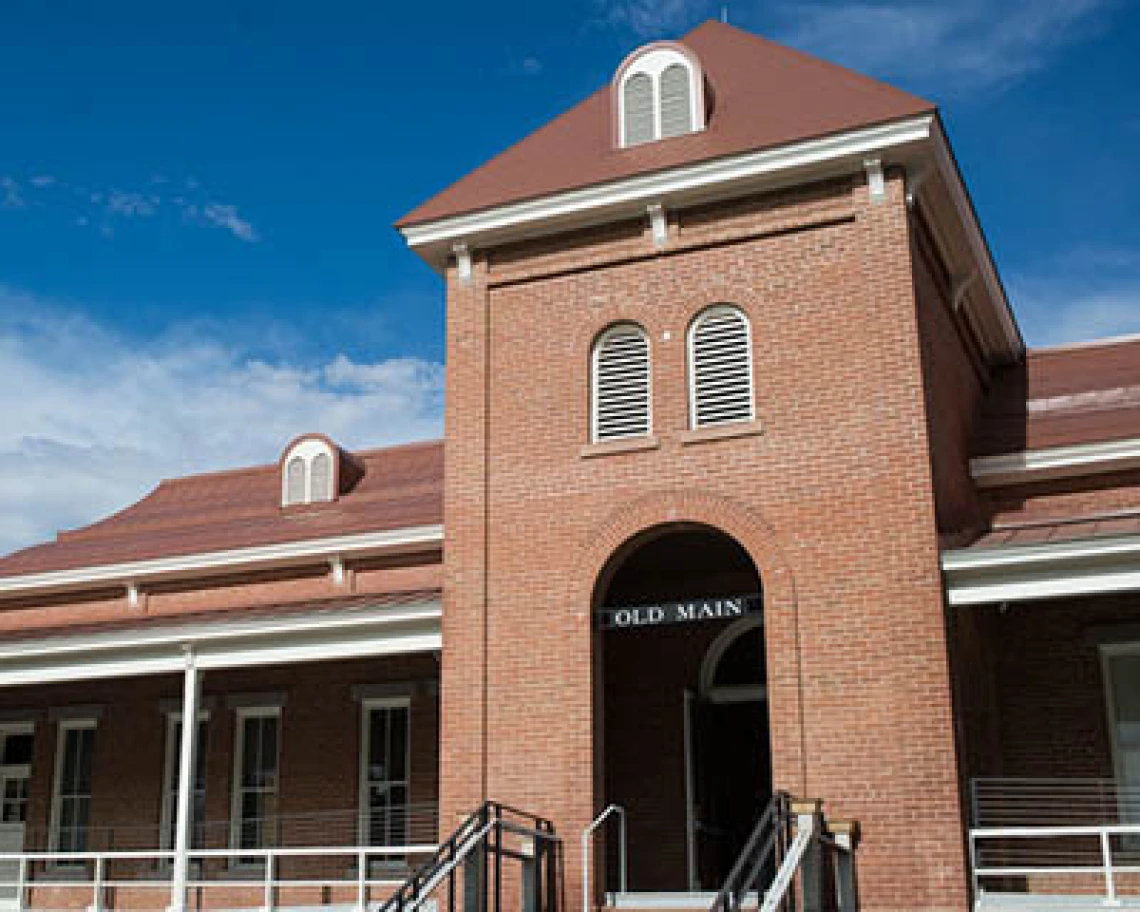UArizona and Health Sciences Colleges Earn Strong Marks in U.S. News Best Grad Rankings
Top 10 rankings include management information systems, photography, rehabilitation services, speech-language pathology and audiology on the U.S. News & World Report 2021 Best Graduate Schools list.

TUCSON, Ariz. – The University of Arizona is home to some of the nation’s best graduate programs, according to U.S. News & World Report.
The publication’s annual Best Graduate Schools list ranked the Eller College of Management’s management information systems program No. 1 among public universities and No. 3 overall. UArizona also earned top 10 placements in photography (tied for No. 3 overall, No. 2 among public universities), speech language pathology (tied for No. 6 overall, No. 3 public) and audiology (tied for No. 10 overall, No. 6 public).
“Our faculty’s excellence in research, instruction and career preparation has helped the university create an exciting and collaborative learning community,” said University of Arizona President Robert C. Robbins, MD. “Graduate students are a vital part of our research and teaching programs, so it is important we support their education and their future careers. I am proud to see our graduate programs rightfully recognized alongside the nation’s best.”

Old Main Building at University of Arizona
The McGuire Center for Entrepreneurship ranked No. 14 overall (No. 6 public), while Eller’s part-time MBA program jumped 16 spots to No. 36 overall and its full-time MBA program rose six spots to No. 46.
In addition to its top-three showing in photography, Arizona Arts finished tied for No. 32 overall.
The College of Education earned a top 20 showing in higher education (No. 16), alongside its overall ranking of No. 73.
The UA School of Government and Public Policy in the College of Social and Behavioral Sciences finished tied at No. 34 on the list of public affairs programs, with subspecialties in public management/leadership (tied No. 23) and nonprofit management (tied No. 24) also earning recognition in U.S. News & World Report.
The James E. Rogers College of Law finished tied for No. 47 on the Best Law Schools ranking. Specialties in legal writing (tied No. 24), health care law (tied No. 32), environmental law (tied No. 33), international law (tied No. 36), trial advocacy (tied No. 50), intellectual property (tied No. 55), business/corporate law (tied No. 59), clinical training (tied No. 61), tax law (tied No. 68) and dispute resolution (tied No. 86) also earned places on the U.S. News list.
The College of Engineering finished tied for No. 63 on the Best Engineering Schools list, with solid marks in the following subspecialties: agricultural (tied No. 23), aerospace/aeronautical/astronautical (tied No. 31), environmental (tied No. 31), industrial/manufacturing/systems (tied No. 34), computer (tied No. 42), civil (tied No. 46), electrical/electronic/communications (tied No. 46), material (tied No. 49), mechanical (tied No. 50), biomedical/bioengineering (tied No. 58), and chemical (tied No. 61).
Each year, U.S. News ranks schools and programs in business, education, engineering, law, nursing and medicine. The rankings in these six areas are based on expert opinions about program excellence and statistical indicators that measure the quality of a school’s faculty, research and students.
Beyond the six disciplines ranked annually, U.S. News also periodically ranks programs in the sciences, social sciences, library sciences, humanities, health and many other areas based solely on the ratings of academic experts.
A number of other UArizona graduate programs appear on the U.S. News list, but their rankings were not subject to review in 2020.
For a full list of rankings, please visit https://www.usnews.com/best-graduate-schools.
# # #
A version of this article appeared originally on the UANews website.
About the University of Arizona Health Sciences
The University of Arizona Health Sciences is the statewide leader in biomedical research and health professions training. UArizona Health Sciences includes the Colleges of Medicine (Tucson and Phoenix), Nursing, Pharmacy, and the Mel and Enid Zuckerman College of Public Health, with main campus locations in Tucson and the Phoenix Biomedical Campus in downtown Phoenix. From these vantage points, Health Sciences reaches across the state of Arizona, the greater Southwest and around the world to provide next-generation education, research and outreach. A major economic engine, Health Sciences employs nearly 5,000 people, has approximately 4,000 students and 900 faculty members, and garners $200 million in research grants and contracts annually. For more information: uahs.arizona.edu (Follow us: Facebook | Twitter | YouTube | LinkedIn | Instagram).
About the University of Arizona
The University of Arizona, a land-grant university with two independently accredited medical schools, is one of the nation's top public universities, according to U.S. News & World Report. Established in 1885, the university is widely recognized as a student-centric university and has been designated as a Hispanic Serving Institution by the U.S. Department of Education. The university ranked in the top 20 in 2018 in research expenditures among all public universities, according to the National Science Foundation, and is a leading Research 1 institution with $687 million in annual research expenditures. The university advances the frontiers of interdisciplinary scholarship and entrepreneurial partnerships as a member of the Association of American Universities, the 65 leading public and private research universities in the U.S. It benefits the state with an estimated economic impact of $4.1 billion annually. For more information: arizona.edu (Follow us: Facebook | Twitter | YouTube | LinkedIn | Instagram).

